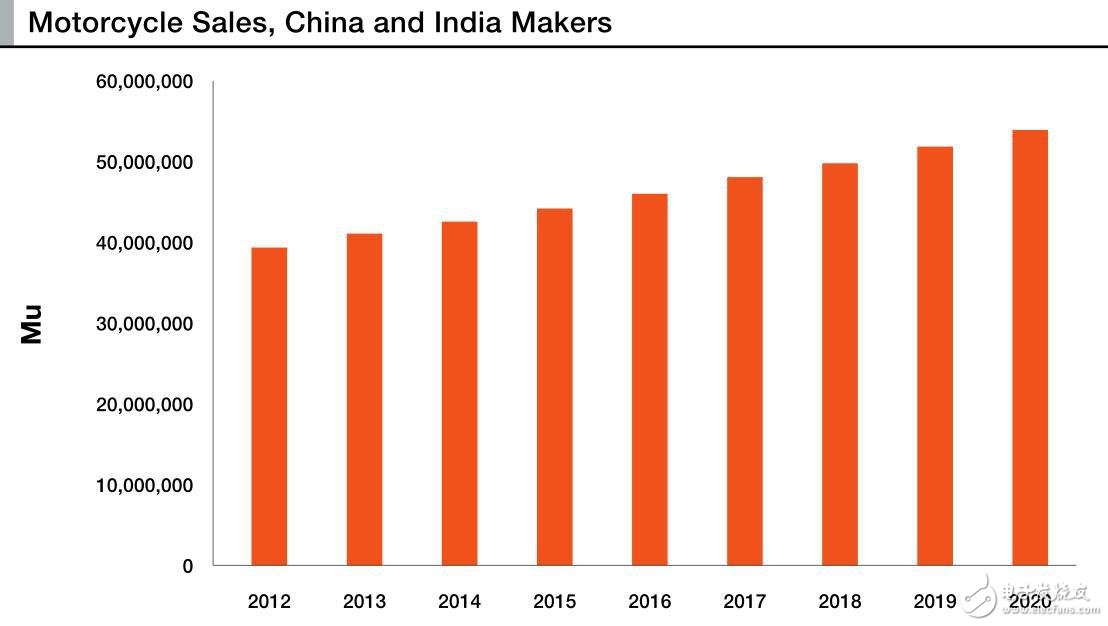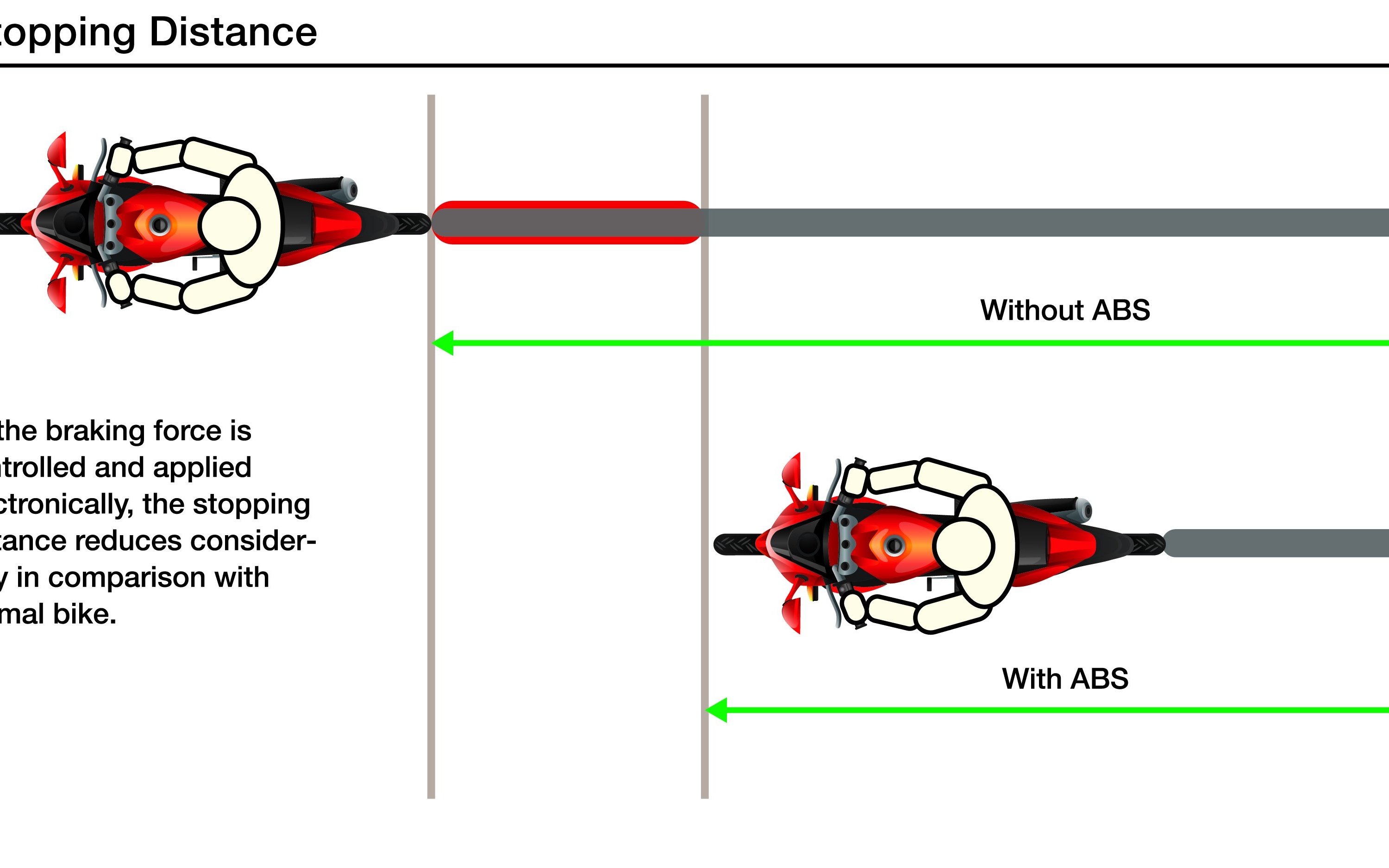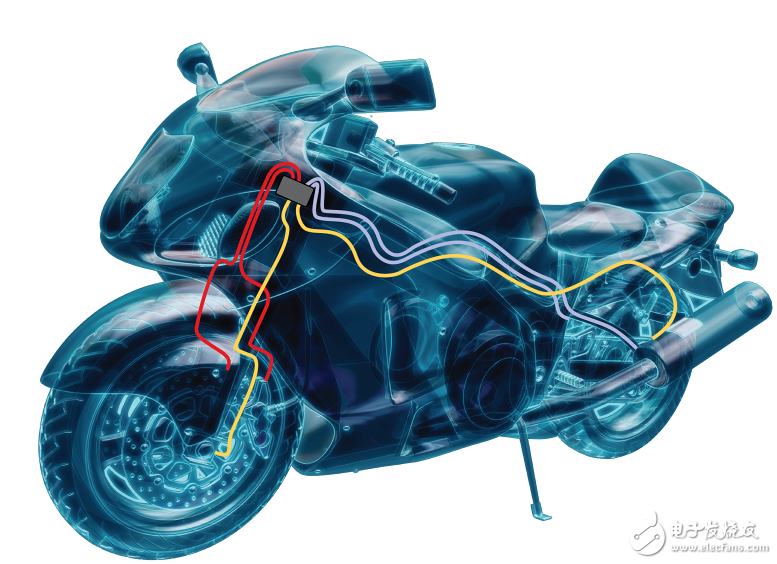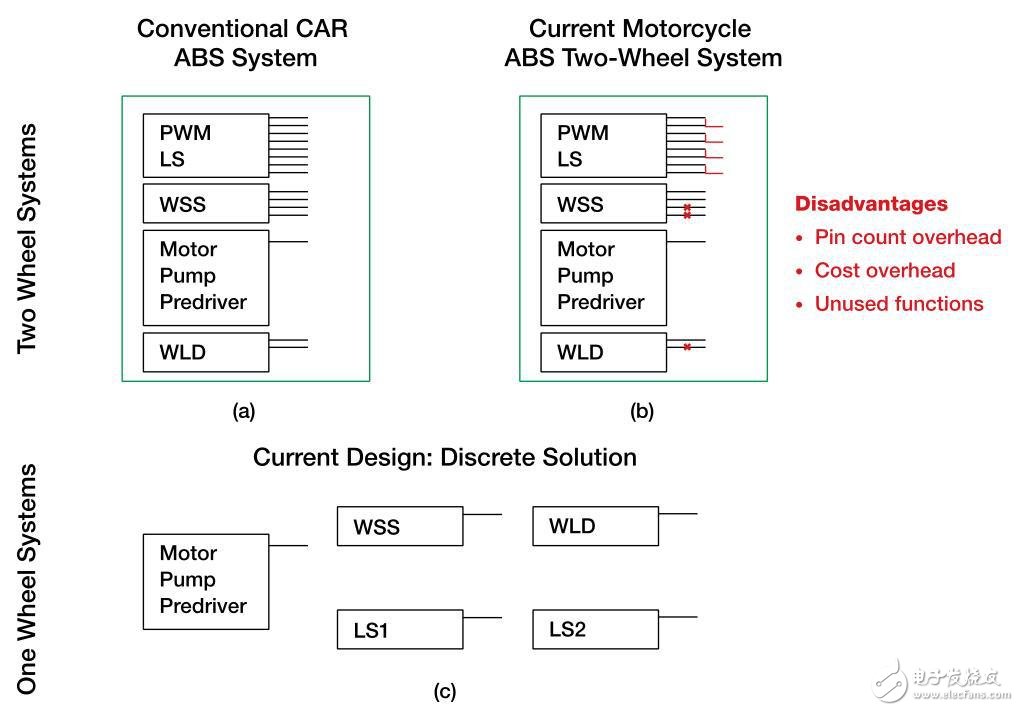Using anti-lock braking system to improve motorcycle safety
Anti-lock braking systems (ABS) reduce accidents and help save lives. This is well known and proven for two- or four-wheel vehicles. Although two-wheeled motorcycles and scooters are not yet widely used in ABS systems like four-wheeled vehicles, there are more and more reasons to support their widespread adoption of ABS systems in the future.
Freescale Semiconductor is a leading semiconductor supplier to the ABS system, which was the case when the technology was widely used in ground vehicles in the 1980s. With a long history and insights into applications, Freescale can strategically understand and address industry requirements for unicycle, tandem and scooter applications.
Benefits of the ABS system for motorcycles and scooters
The ABS system was first used in high-end cars in 1978. Since 2007, all new factory cars sold in the EU have to be equipped with ABS systems [1]. In the United States, the National Highway Traffic Safety Administration issued the US Federal Motor Vehicle Safety Standard (FMVSS 126) on September 1, 2011, requiring passenger cars and utility vehicles with a gross weight of 4,536 kilograms (10,000 pounds) or less. Trucks and buses must use an electronic stability control system (ESC, built-in ABS) [2]. In India, the government began in 2015 to require new passenger cars and other four-wheeled vehicles to install the ABS system [3].
In 2013, the global sales of motorcycles was 99.5 million, the motorcycle industry is expected to achieve an annual growth of 5.9%, and sales in 2018 will reach 132.4 million [4]. Similar to the history of cars using the ABS system, the first two-wheel ABS brake system was installed on high-end motorcycles in 1988. Although several manufacturers now offer ABS systems, these systems are mainly used for high-end models and have not been extended to small-displacement locomotives. In India and China, the largest sales are twin-engine cars, motorcycles and scooters with a displacement of less than 150 cc, accounting for 90% of market sales [5]. Figure 1 shows that sales of dual-engine vehicles in China and India are growing. In 2014, the global ABS penetration rate is expected to be close to 4%, while the current ABS penetration rate in India and China is 0% [5].

Figure 1. Trends in dual-engined vehicles in China and India – by producers [6].
Facts speak louder than words, the following facts show the effectiveness of installing ABS systems in dual-engine cars:
• In 2006, in the EU-25, motorcycle mileage accounted for 2% of total mileage, but motorcycle accident deaths accounted for 16% of total road traffic deaths.
• According to 2013 road accident statistics, 26.3% of road traffic accidents worldwide are related to dual-engine vehicles, and the number of such accidents has reached 39,353 [3].
• According to the 2013 American Highway Safety Insurance Association (IIHS), the number of motorcycle accidents with ABS is 31% lower than that of the same type of motorcycle without ABS [8].
Improve safety of motorcycles with ABS (anti-lock braking system)
• US Highway Loss Data Institute 2013 statistics show that motorcycle collision insurance rates with ABS are 20% lower than those without ABS - if ABS combination controls are installed (front and rear wheels) All installed ABS) is 31% lower [8].
• For general drivers with a speed of 100 km/h, ABS can reduce the braking distance by 15% [9].
• With ABS, experienced motorcyclists and novice drivers can reduce the braking distance [8].
Figure 2 compares the effects of installed and unmounted ABS systems on motorcycles.

Figure 2. After installing ABS, the braking distance of the motorcycle (generally, the initial speed of the driver is 100 km / h) is usually greatly reduced. After installing the ABS system, the braking distance is shortened, and the possibility of a fatal collision of the motorcycle driver is reduced by 31% [9].
Consumer reports refer to ABS as “the most valuable feature of motorcycles†[10].
Legislation to promote implementation
Even though the above discussion of safety factors is not enough to convince dual-engine manufacturers to install ABS systems, governments around the world have been convinced and asked to install them.
In 2016, the EU will require ABS [8] to be installed on new factory motorcycles with engine displacements exceeding 125 cc (cubic centimeters). By 2019, all double-engined vehicles with a displacement of more than 50 cc in the EU must be equipped with ABS. The EU directive is expected to be adopted in Asia and the Americas.
Existing and future legislation will encourage more suppliers to develop ABS braking systems for dual-engine vehicles.
ABS brake system for dual-engine vehicles
In the ABS brake system, the locomotive driving speed is measured by a wheel speed sensor or a sound wheel. The microcontroller (MCU) in the ABS Electronic Control Unit (ECU) uses these measurements to determine if the vehicle will stop. When this happens, the MCU sends an analog mixed signal (AMS) to the integrated circuit (IC) in the ECU, drives the hydraulic valve and adjusts the pressure on the pedal from the brake cylinder. This braking can occur several times per second. Figure 3 shows the position of these brake units on the motorcycle.
Improve safety of motorcycles with ABS (anti-lock braking system)

Figure 3. The ABS component of a motorcycle is similar to the ABS component on a four-wheeled vehicle system [7].
Typically, the first-tier suppliers of motorcycle manufacturers offer two-wheel and one-wheel systems. With the two-wheel system, the ABS AMS IC designed for passenger cars can also be used because it has enough features. However, to ensure the cost-effectiveness of a single-wheel system, a completely different approach must be used to achieve a single-wheel brake – a stand-alone design. This requires two completely different design/development paths. Figure 4 shows the combined output and unused outputs of the ABS AMS IC in a two-wheel system, along with the associated disadvantages, and shows a stand-alone single-wheel system solution.

Figure 4. Current (b) two-wheel ABS design used in the two-wheel ABS design and the (c) sub-legislation adopted by the single-wheel ABS. Common modules in various designs include: Pulse Width Modulation (PWM) low-side (LS) drivers, wheel speed sensors (WSS), warning light (WLD) drivers, and motor pump pre-drive modules.
The ABS technology currently used in two-wheel ABS and single-wheel ABS braking systems is not optimized and requires additional design to achieve its application in both systems. In the past, the semiconductor industry has had a major impact on how to deal with these situations. Freescale expects that if there is a fully integrated solution, it will increase the competitiveness of suppliers and increase the industry's response to the government's ABS legislation on dual-engine installations.
Improve safety of motorcycles with ABS (anti-lock braking system)
Conclusion: Safer dual-engine car
In two-wheeled vehicles, anti-lock braking systems have proven their value for accident prevention and reduction of casualties. In addition to increasing consumer demand, legislation can also drive the wider application of this technology to dual-engine vehicles around the world. Since the technology was used in ground vehicles in the 1980s, as a leading ABS semiconductor supplier, Freescale is poised to continue to maintain its leading position, launching for two-wheel and one-wheeled motorcycles. High integrated circuits for scooter applications.
This article is selected from the "Automotive Electronics Special", more quality content, download now 
Containerized Energy Storage System
Containerized Energy Storage System,2Mwh Container Energy Storage System,Off Grid Energy Storage System,10Mwh Container Energy Storage System
Jiangsu Stark New Energy Co.,Ltd , https://www.stark-newenergy.com